- Tips for Growing Blackberries
- Choose the Right Variety
- Growth Habit
- Fruit Flavor
- Maturity and Harvest Time
- Disease Resistance
- Recommended Varieties:
- Provide Proper Sunlight and Soil
- Key Points:
- Planting Blackberries
- 1. Selecting a Site
- 2. Preparing the Soil
- 3. Planting Technique
- 4. Trellising and Support
- Prepare the Soil
- 1. Test the Soil pH
- 2. Remove Weeds and Grass
- 3. Add Organic Matter
- 4. Improve Drainage
- Planting Technique
- Watering and Fertilizing
- 1. Watering:
- 2. Fertilizing:
- 3. Mulching:
- 4. Irrigation and Fertilizer Schedule:
- Watering Needs
- 1. Consistent Watering
- 2. Mulching
- 3. Avoid Overwatering
- 4. Rainwater Collection
- Proper Fertilization
- 1. Soil Testing
- 2. Organic Matter
- 3. Nitrogen
- 4. Phosphorus and Potassium
- 5. Mulching
- 6. Timing and Frequency
- 7. Watering
- Pruning and Training
- Why Pruning is Important
- When to Prune
- How to Prune Blackberries
- Training Methods
- Question-answer:
- What are some important rules for growing blackberries?
- How much sunlight do blackberry plants need?
- Why is well-drained soil important for growing blackberries?
- When should blackberry plants be pruned?
- How should blackberry plants be supported?
- Can blackberries be grown in containers?
- How long does it take for blackberry plants to produce a big harvest?
- Video: Growing Blackberries In Containers – The Complete Guide To Growing Blackberry
Growing blackberries can be a rewarding experience, but it requires careful planning and adherence to a few important rules. With the right techniques, you can ensure a bountiful harvest of juicy, delicious blackberries.
Rule #1: Select the Right Variety
The first step to a successful blackberry harvest is choosing the right variety. There are several different types of blackberries, each with their own unique characteristics. Some varieties are better suited for warmer climates, while others thrive in colder regions. It is important to select a variety that is well-suited to your specific growing conditions.
Rule #2: Provide Adequate Support
Blackberry plants can grow quite large and become heavy with fruit. To prevent damage to the plants and ensure a healthy harvest, it is important to provide adequate support. This can be done by installing trellises or using stakes. Make sure to secure the plants to the support structure as they grow to prevent them from falling over.
Rule #3: Prune Regularly
Pruning is an essential task for blackberry growers. It not only helps to keep the plants in shape, but also encourages the growth of new shoots that will bear fruit in the following season. Regular pruning helps to remove old, dead canes and promotes better air circulation within the plant, reducing the risk of disease.
Rule #4: Maintain Proper Irrigation
Blackberry plants require consistent moisture to thrive. It is important to ensure that they receive an adequate amount of water throughout the growing season. However, overwatering can lead to root rot, so it is important to strike a balance. A deep watering once or twice a week is usually sufficient. Mulching around the plants can help to retain moisture and suppress weeds.
Folloing these four important rules for growing blackberries will increase your chances of achieving a bountiful harvest. By choosing the right variety, providing adequate support, pruning regularly, and maintaining proper irrigation, you can enjoy a summer full of luscious blackberries straight from your own garden.
Tips for Growing Blackberries
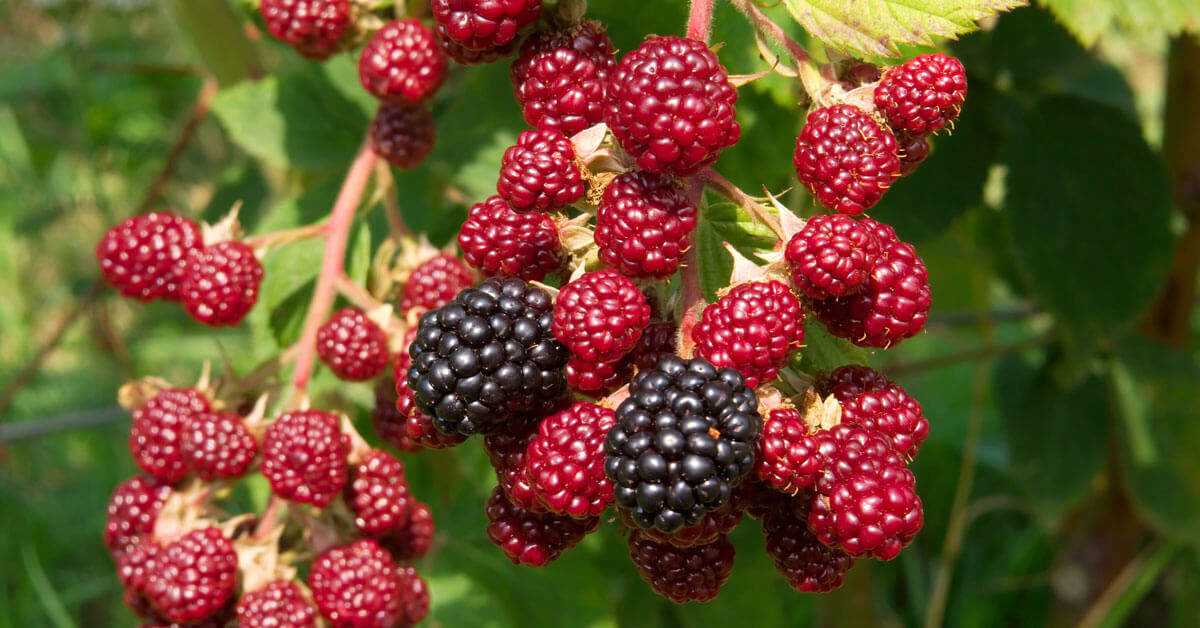
- Choose the right variety: When growing blackberries, it is important to choose the right variety for your climate and growing conditions. Some varieties are more tolerant of cold temperatures, while others thrive in hot climates. Research different varieties and select one that is best suited for your area.
- Select the ideal location: Blackberries require full sun to produce the best yields. Choose a location in your garden that receives at least 6-8 hours of direct sunlight daily. The soil should be well-draining and rich in organic matter. Avoid areas with heavy clay soil or poor drainage.
- Provide proper support: Blackberry plants have long, trailing canes that can become heavy with fruit. To prevent them from sprawling on the ground and to make harvesting easier, provide them with proper vertical support. Install a trellis or fence system to train the canes to grow upright.
- Maintain regular watering: Blackberries need consistent moisture throughout the growing season. Water the plants regularly, especially during dry spells. Be careful not to overwater, as blackberries prefer well-drained soil. Mulching around the plants can help retain moisture and suppress weed growth.
- Prune and thin the canes: To ensure a big harvest, it is important to prune and thin the blackberry canes. Prune out any dead or damaged canes in late winter or early spring. Thin out excessive canes to maximize airflow and light penetration, which will prevent disease and promote better fruit production.
- Fertilize appropriately: Blackberries benefit from regular fertilization to maintain healthy growth and abundant fruiting. Apply a balanced fertilizer in early spring and again after harvest. Follow the package instructions for proper application rates. Avoid over-fertilization, as it can lead to excessive vegetative growth and reduced fruit quality.
- Monitor pests and diseases: Keep a close eye on your blackberry plants for any signs of pests or diseases. Common pests include aphids, spider mites, and fruit flies. Treat infestations promptly with organic insecticides or other appropriate control methods. Regularly inspect the leaves and fruit for any signs of disease, such as powdery mildew or rust, and take appropriate action to prevent the spread.
- Harvest at the right time: Blackberries are ready to harvest when they are fully black and easily detach from the plant. Gently tug on the berries, and if they come off easily, they are ripe. Harvest regularly and avoid leaving overripe fruit on the vine, as it can attract pests and increase the risk of disease.
Choose the Right Variety
Choosing the right variety of blackberries is crucial for a successful harvest. There are various types of blackberries available, each with its own characteristics and growth requirements. Here are some factors to consider when selecting the right variety:
Growth Habit
Blackberries have two main growth habits: trailing and erect. Trailing blackberries have long canes that grow along the ground, while erect blackberries have upright canes. Trailing blackberries require support, such as trellises or fences, to keep them off the ground and prevent them from spreading uncontrollably. Erect blackberries, on the other hand, can grow vertically without support.
Fruit Flavor
Blackberries come in different flavors, ranging from sweet to tart. Consider your personal preference when choosing a variety. Some popular varieties known for their delicious flavor include Marion, Chester, and Triple Crown.
Maturity and Harvest Time
Different blackberry varieties have different maturity and harvest times. Some varieties mature early in the season, while others mature later. Consider the length of your growing season and choose varieties that will ripen when it is most suitable for your region.
Disease Resistance
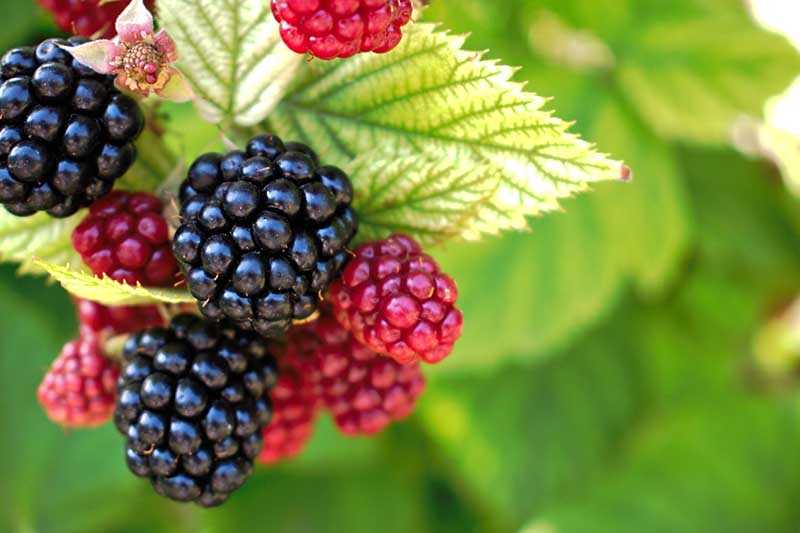
Blackberries can be susceptible to various diseases, such as cane blight and rust. When choosing a variety, look for those that are known for their disease resistance. This will help minimize the risk of disease and ensure a healthier crop.
Recommended Varieties:
- Marion: A trailing blackberry with excellent flavor and disease resistance.
- Chester: An erect blackberry with large, sweet fruit that ripens in late summer.
- Triple Crown: An erect blackberry with large, flavorful berries that ripen in mid-summer.
- Apache: A thornless blackberry with high yields and good disease resistance.
By considering these factors and choosing the right variety for your growing conditions, you can ensure a bountiful harvest of delicious blackberries.
Provide Proper Sunlight and Soil
Blackberries thrive best in full sun, which means they need at least 8 hours of direct sunlight each day. When choosing a spot for planting, look for an area with good sun exposure and protection from strong winds.
Additionally, blackberries prefer well-draining soil that is rich in organic matter. Before planting, make sure to prepare the soil by removing any weeds or grass and tilling it to a depth of at least 12 inches. This will help create a loose and fertile soil environment for the blackberry plants.
It’s also recommended to perform a soil test to determine the pH level of the soil. Blackberries prefer a slightly acidic soil with a pH level of 6.0 to 6.5. If the pH level is too high, you can add sulfur or peat moss to lower it.
Key Points:
- Plant blackberries in a spot with full sun exposure and protection from strong winds.
- Prepare the soil by removing weeds, tilling it, and adding organic matter.
- Perform a soil test to check the pH level and adjust if necessary.
Planting Blackberries
1. Selecting a Site
When planting blackberries, it is important to choose the right site that meets their growing requirements. Blackberries thrive in well-drained soil with a pH between 5.5 and 7.0. Look for a location with full sun exposure, as blackberries need at least 6 hours of direct sunlight daily for optimal growth and fruit production. Avoid areas prone to frost or strong winds, as these can damage the plants.
2. Preparing the Soil
Before planting blackberries, it is essential to prepare the soil properly. Loosen the soil using a garden fork or tiller to a depth of at least 12 inches. Remove any weeds or grass from the area, as they can compete with blackberry plants for nutrients and water. Adding organic matter, such as compost or well-rotted manure, can improve soil fertility and drainage. Test the soil to determine its nutrient content and adjust accordingly.
3. Planting Technique
Blackberries can be planted in early spring or fall. Dig a hole large enough to accommodate the root system of the plant. Gently spread out the roots in the hole and backfill with soil, making sure the crown of the plant is level with the soil surface. Firmly press the soil around the roots to eliminate any air pockets. Space blackberry plants 3-5 feet apart in rows, leaving 8-10 feet between rows to allow for air circulation and future growth.
4. Trellising and Support
To support blackberry plants and promote better fruit production, it is recommended to trellis them. Install a sturdy trellis system before or shortly after planting. This can be done using posts and wires or a specialized blackberry trellis system. As the plants grow, gently tie the canes to the trellis using plant ties or soft twine. Trellising helps keep the plants upright, reduces the risk of disease, and makes harvesting easier.
Note: Different blackberry cultivars have varying growth habits, so choose a trellising system that suits the specific type of blackberries you are growing.
By following these planting tips, you can give your blackberries a strong start and set them up for a bountiful harvest in the future.
Prepare the Soil
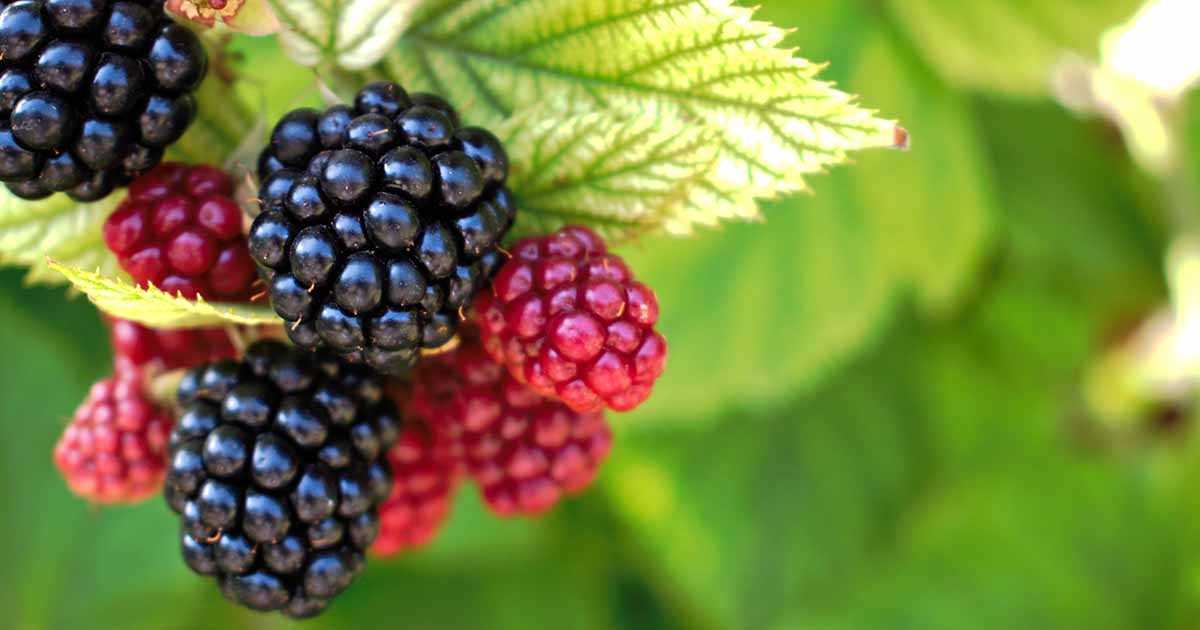
Before planting your blackberry bushes, it’s important to prepare the soil properly. Blackberries thrive in well-drained soil that is rich in organic matter. Follow these steps to ensure your soil is ready for planting:
1. Test the Soil pH

Blackberries prefer soil with a pH level between 5.5 and 7.0. You can purchase a soil testing kit from a garden center or send a sample to a local agricultural extension office for testing. Adjust the soil pH if necessary by adding lime to raise the pH or sulfur to lower it.
2. Remove Weeds and Grass
Clear the area of any weeds, grass, or other vegetation that may compete with the blackberry bushes for nutrients and water. Use a garden hoe or a tiller to remove the weeds and create a clean planting area.
3. Add Organic Matter
Blackberries thrive in soil that is rich in organic matter, such as compost or well-rotted manure. Spread a layer of organic matter over the planting area and mix it into the soil using a garden fork or a tiller. This will help improve soil structure, moisture retention, and nutrient availability.
4. Improve Drainage
If your soil tends to be heavy or clay-like, it’s important to improve drainage before planting blackberries. One way to do this is to add organic matter, which will help loosen the soil and allow water to drain more easily. Another option is to create raised beds or mounds for planting, which provide better drainage for the roots.
By following these steps to prepare the soil, you will create an ideal environment for growing healthy blackberry bushes and ensure a bountiful harvest.
Planting Technique
Proper planting technique is crucial for the successful growth and development of blackberries. By following these guidelines, you can ensure that your blackberry plants have the best start and maximize your harvest:
- Choose the right location: Blackberries need full sun to thrive, so choose a spot in your garden that receives at least 6-8 hours of direct sunlight per day. The soil should be well-drained and have a pH level between 5.5 and 7.
- Prepare the soil: Before planting, remove any weeds, rocks, or debris from the planting area. Loosen the soil with a garden fork or tiller to a depth of at least 12 inches. This will help the roots penetrate easily and promote good drainage.
- Planting depth: Dig a hole that is wide and deep enough to accommodate the roots of the blackberry plant. Place the plant in the hole, making sure that the crown (where the stem meets the roots) is level with the soil surface. Backfill the hole with soil, pressing gently around the roots to remove any air pockets.
- Spacing: Space blackberry plants 3-4 feet apart in rows that are 8-10 feet apart. This will allow enough room for the plants to grow and spread without overcrowding.
- Watering: After planting, water the blackberry plants thoroughly. This will help settle the soil and provide moisture to the roots. Keep the soil consistently moist, but not waterlogged, throughout the growing season. A drip irrigation system or soaker hose is ideal for delivering water directly to the roots.
- Mulching: Apply a layer of organic mulch around the base of the blackberry plants to help conserve moisture, suppress weed growth, and regulate soil temperature. Wood chips, straw, or compost are suitable mulching materials.
- Support: Blackberry plants have long, trailing canes that need support to prevent them from sagging or breaking. Install a trellis or fence system before planting to provide the necessary support. As the plants grow, gently train the canes along the trellis or fence.
By following these planting techniques, you can establish healthy blackberry plants that will reward you with a bountiful harvest of delicious berries.
Watering and Fertilizing
Proper watering and fertilizing techniques are crucial for growing healthy and productive blackberry plants. Here are some important tips:
1. Watering:
Blackberries require regular and consistent watering, especially during dry periods. It is important to keep the soil moist, but not waterlogged, as excessive moisture can lead to root rot. Here are some guidelines for watering blackberries:
- Water the plants deeply, ensuring that the water reaches the root zone.
- Watering should be done in the morning or early afternoon to allow the leaves to dry before evening, preventing fungal diseases.
- Avoid overhead watering to minimize the risk of diseases. Instead, use drip irrigation or soaker hoses to water at the base of the plants.
- Monitor the soil moisture regularly and adjust the watering schedule based on the weather conditions.
2. Fertilizing:
Blackberry plants require regular feeding to promote growth and fruit production. Here are some recommendations for fertilizing blackberries:
- Apply a slow-release balanced fertilizer, such as a 10-10-10 or 14-14-14 formula, in early spring before new growth starts.
- Avoid over-fertilizing, as it can lead to excessive vegetative growth and less fruit production.
- Apply organic matter, like well-rotted compost or aged manure, around the base of the plants in early spring to improve soil fertility.
- Monitor the plants for nutrient deficiencies, such as yellowing leaves, and provide appropriate fertilizers accordingly.
3. Mulching:
Mulching is beneficial for blackberry plants as it helps conserve soil moisture, suppresses weed growth, and adds organic matter to the soil. Here are some mulching guidelines:
- Apply a layer of organic mulch, such as straw, wood chips, or shredded leaves, around the base of the plants.
- Mulch should be applied in early spring, after the soil has warmed up, to prevent late frosts from damaging the plants.
- Maintain a mulch depth of 2-4 inches, taking care not to pile it against the plant stems.
- Regularly check the mulch and remove any weeds or grass that may emerge.
4. Irrigation and Fertilizer Schedule:
Here is a general schedule for watering and fertilizing blackberries:
| Month | Watering | Fertilizing |
|---|---|---|
| March | Water deeply once per week, increasing frequency during dry periods. | Apply balanced slow-release fertilizer according to package instructions. |
| April | Continue watering deeply once per week, adjusting frequency based on weather conditions. | Monitor plants for nutrient deficiencies and provide additional fertilizers if needed. |
| May | Water deeply twice per week, especially during hot weather. | Apply organic matter around the base of the plants. |
| June | Continue watering deeply twice per week, adjusting frequency based on weather conditions. | Monitor plants for nutrient deficiencies and provide additional fertilizers if needed. |
By following proper watering and fertilizing practices, you can ensure that your blackberry plants thrive and produce a bountiful harvest of delicious berries.
Watering Needs
Proper watering is essential for the growth and productivity of blackberry plants. Here are some important things to keep in mind when it comes to watering:
1. Consistent Watering
Blackberries need consistent moisture to thrive, especially during the fruiting season. It is important to provide them with a steady supply of water to ensure optimal growth. Deep and thorough watering once or twice a week is usually sufficient, but this may vary depending on the climate and soil conditions.
2. Mulching
Mulching is a great way to maintain soil moisture and prevent weed growth around blackberry plants. Apply a thick layer of organic mulch, such as wood chips or straw, around the base of the plants. This will help retain moisture in the soil and reduce the need for frequent watering.
3. Avoid Overwatering
While blackberries need regular watering, it is important to avoid overwatering, as this can lead to root rot and other plant diseases. Make sure the soil has good drainage to prevent water from pooling around the roots. Check the moisture level of the soil regularly and adjust your watering schedule accordingly.
4. Rainwater Collection
If possible, consider collecting rainwater to use for watering your blackberry plants. Rainwater is free from chemicals and is generally better for plants than tap water. Use a rain barrel or other collection method to harvest rainwater and store it for use during dry periods.
By following these watering guidelines, you can ensure that your blackberry plants receive the necessary moisture for healthy growth and abundant harvests.
Proper Fertilization
Fertilization is essential for the proper growth and development of blackberry plants. By providing them with the right nutrients, you can ensure a bountiful harvest. Here are some guidelines to follow for proper fertilization:
1. Soil Testing
Before you start fertilizing your blackberry plants, it is important to perform a soil test. This will help you determine the nutrient content and pH level of your soil. Based on the test results, you can make informed decisions about the type and amount of fertilizer to use.
2. Organic Matter
Incorporating organic matter into the soil is an effective way to provide your blackberry plants with essential nutrients. Compost, well-rotted manure, or leaf mold can be added to the soil before planting or as a top dressing around the plants. This will improve the soil structure, drainage, and fertility.
3. Nitrogen
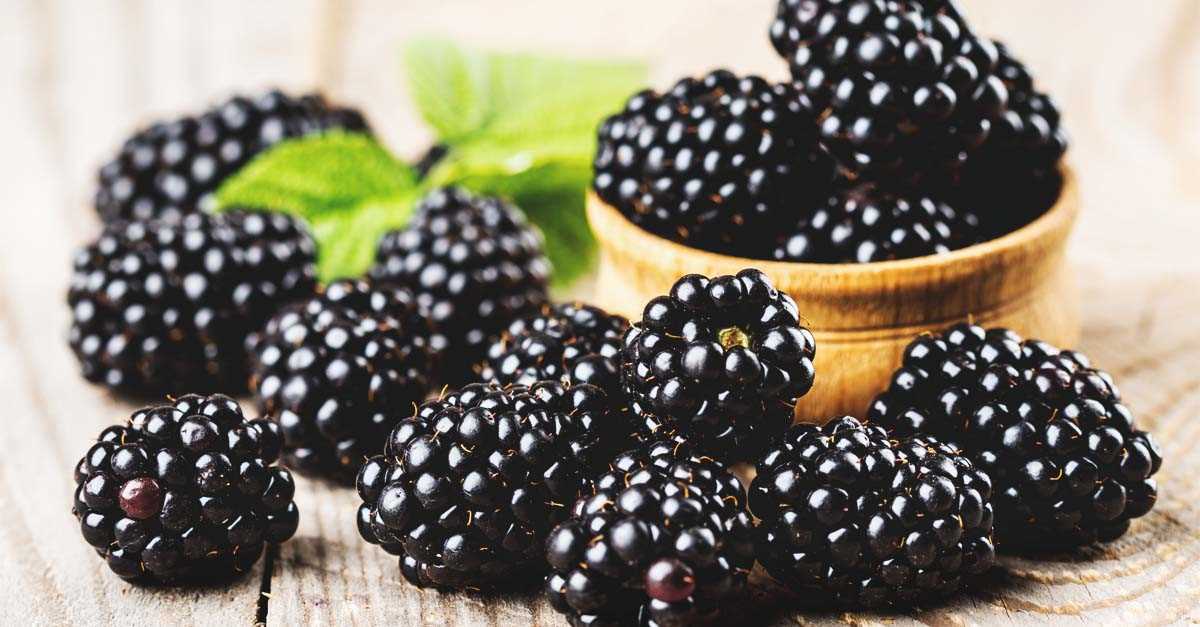
Blackberry plants have a high demand for nitrogen, especially during the growing season. Nitrogen promotes leaf and stem growth, which is important for fruit production. Apply a balanced fertilizer with a higher ratio of nitrogen (such as 10-10-10 or 14-14-14) in early spring and again in late spring or early summer.
4. Phosphorus and Potassium
Phosphorus and potassium are crucial for flower production and fruit development. A fertilizer with a lower nitrogen ratio but higher phosphorus and potassium content (such as 5-10-10 or 4-8-12) can be applied in late spring or early summer. Avoid excessive use of phosphorus, as it can lead to imbalances in soil fertility.
5. Mulching
Applying a layer of organic mulch around the base of blackberry plants helps retain moisture, regulate soil temperature, and suppress weeds. The decomposing mulch also adds organic matter to the soil, providing a slow release of nutrients over time.
6. Timing and Frequency
For established blackberry plants, fertilization should be done in early spring and again in late spring or early summer. Avoid fertilizing too late in the season, as this can promote new growth that may be susceptible to winter damage. Follow the recommended application rates on the fertilizer package, and do not over-fertilize, as it can harm the plants and lead to excessive vegetative growth at the expense of fruit production.
7. Watering
After applying fertilizer, make sure to water the plants thoroughly. This will help dissolve and distribute the nutrients evenly in the soil. Regular watering is also important to ensure that the plants have adequate moisture for healthy growth.
By following these proper fertilization practices, you can provide your blackberry plants with the nutrients they need to thrive and produce a big harvest of delicious berries.
Pruning and Training
Why Pruning is Important
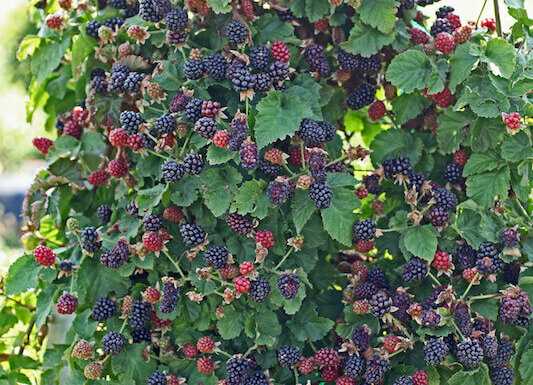
Pruning is an essential task when it comes to growing blackberries. It helps shape the plant, encourages new growth, and ensures a healthy and productive harvest. By removing old canes and cutting back the plant, you can increase air circulation, sunlight penetration, and reduce the risk of disease. Pruning also helps control the size of the plant, making it easier to manage and harvest.
When to Prune

Blackberry bushes should be pruned during the dormant season, which is typically in late winter or early spring before new growth begins. It is important to wait until all threat of frost has passed before pruning, as cold weather can damage new growth. The specific timing may vary depending on your climate and region, so it’s recommended to consult a local gardening expert or agricultural extension office for guidance.
How to Prune Blackberries
When pruning blackberries, start by removing any dead, damaged, or diseased canes. These canes are usually discolored, brittle, or dry. Use sharp pruning shears or loppers to make clean cuts at the base of the cane, close to the ground. After removing the unwanted canes, focus on thinning out the remaining ones to improve air circulation and light penetration. Aim to have around 4-6 strong canes per plant.
Training Methods
Training blackberry plants involves supporting the canes and encouraging them to grow in a certain direction. This helps prevent them from sprawling on the ground, making it easier to manage and harvest the berries. There are several common methods used for training blackberries:
- Trellising: A trellis system involves setting up a series of posts and wires to support the canes. The canes are tied to the wires as they grow, keeping them upright and off the ground.
- Wire Fencing: Similar to trellising, wire fencing involves attaching a sturdy wire fence to posts and training the canes to grow along the fence.
- Espalier: Espalier involves training the canes to grow against a flat surface, such as a wall or fence. This method is commonly used in small gardens or urban spaces.
Regardless of the training method you choose, it’s important to regularly check and adjust the canes as they grow. Secure them to the supports with soft ties or twine, being careful not to damage or constrict their growth.
Question-answer:
What are some important rules for growing blackberries?
There are four important rules for growing blackberries: providing enough sunlight, using well-drained soil, pruning properly, and providing support for the plants.
How much sunlight do blackberry plants need?
Blackberry plants need at least six to eight hours of sunlight per day. They thrive in full sun, so it’s important to choose a location that receives ample sunlight.
Why is well-drained soil important for growing blackberries?
Well-drained soil is important for growing blackberries because these plants do not tolerate waterlogged or soggy conditions. They prefer soil that drains well to prevent root rot and other diseases.
When should blackberry plants be pruned?
Blackberry plants should be pruned in late winter or early spring before new growth begins. This helps maintain the shape of the plant, remove dead or diseased branches, and promote better fruit production.
How should blackberry plants be supported?
Blackberry plants should be supported by installing a trellis system or using stakes and wires. This helps keep the plants upright, prevents them from sprawling on the ground, and makes harvesting easier.
Can blackberries be grown in containers?
Yes, blackberries can be grown in containers. Choose a large container that is at least 18 inches deep and wide and fill it with well-draining potting soil. Make sure the container receives adequate sunlight and water the plants regularly.
How long does it take for blackberry plants to produce a big harvest?
Blackberry plants generally start producing a small harvest in their second year and reach full production by the third or fourth year. However, this can vary depending on the variety and growing conditions.







